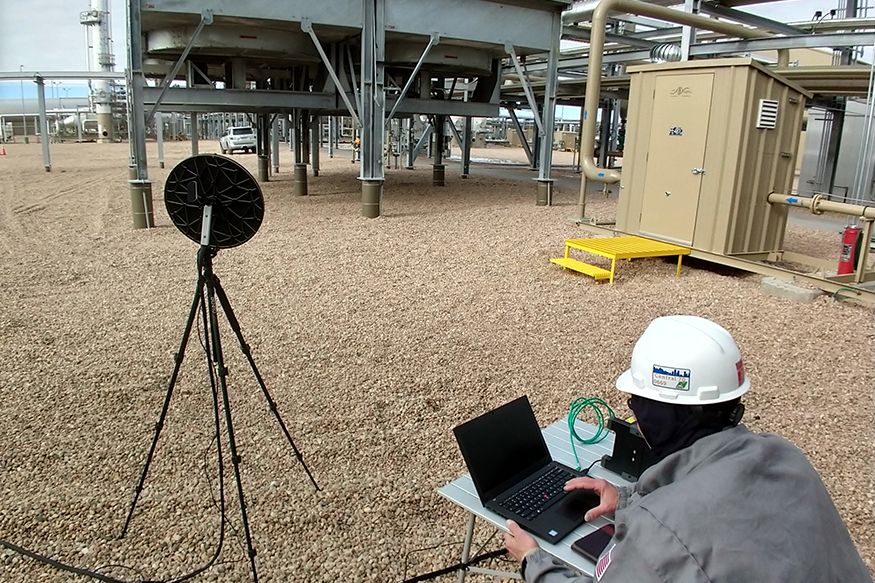is a consulting firm specializing in acoustics, noise and vibration based in Littleton, Colorado. Founded by Jeff Kwolkoski in 2012, Wave Engineering's clients include architects, contractors, engineers, corporations, school districts, developers, institutions, and individuals who need help to improve acoustics and control noise or vibration.
LEARN MORE
WAVE ENGINEERING
A consultant’s work is never dull, as Wave Engineering’s noise experts can attest. Their projects vary tremendously, ranging from reviewing and interpreting LEED (Leadership in Energy and Environmental Design), ANSI, ASTM, and ISO acoustic standards to evaluating and designing electronic sound masking systems for speech privacy and providing expert witness and forensic engineering services.
Identifying Noise Emission
The noise experts at Wave Engineering were recently joined by a Brüel & Kjær Acoustic Camera. A portable acoustic beamforming array solution used to locate noise and view transient sound sources on-site using an aim, shoot, and measuring procedure.
Wave Engineering President and Senior Acoustical Engineer, Jeff Kwolkoski says, “The acoustic camera allows us to actually see sound radiation and noise emissions (sound leaks). Originally designed for aerospace and automotive noise applications, we are using it for industrial, environmental, manufacturing, architectural, and other innovative noise applications.”
The acoustic camera provides a total of 30 microphones, a sophisticated signal processing, and BK Connect software to identify the loudest noise source among a host of other noise sources, Wave Engineering can pinpoint sound leaks in walls, doors, floors, and target the required noise mitigation. The acoustic camera is also used to find transient and intermittent noise sources on equipment or machinery, and to identify which components of large equipment are causing excessive noise. Acoustic treatment can then be applied where necessary.
Identifying Noise Sources
Jeff Kwolkoski describes a recent project, “We were contacted by an industrial facility concerned about the noise that was causing complaints from nearby neighbors. There were many sources producing noise and contributing to the noise radiating from the facility. By testing and making computer-based models of the facility, we were able to predict which noise sources were the most significant noise contributors.”
However, many of the sources were complex and included multiple sources such as compressors, motors, piping, and valves. Jeff continues, “Enter the Acoustic Camera. We first looked at the facility from the property line and used the camera to verify where the most significant noise was coming from.” Next, the Acoustic Camera was used to further narrow down the sources of noise at each piece of equipment. “Without the camera,” says Jeff, “it would have been necessary to acoustically treat multiple noise sources to make sure that the noise was sufficiently reduced. The camera allowed us to pinpoint which parts of the equipment required noise mitigation thus reducing the overall cost to the owner.”
Sound Transmission Through Walls
The Acoustic Camera was quickly in use again when Wave Engineering was called to investigate complaints of poor sound isolation and a lack of speech privacy between offices in a new commercial office space. Office occupants complained of being able to overhear and follow conversations from adjacent offices, conference rooms, and corridors. However, some partitions seemed to perform better than others even though the designs were identical.
The offices were constructed from a combination of conventional drywall and modular walls. The drywall extended to the deck above and the modular walls only extended up to the lay-in ceiling. Most of the complaints were from offices with modular construction.
Jeff explains, “Our first task was to determine if the walls were performing as they should. The Noise Isolation Class (NIC) was measured using pink noise generated with powered loudspeakers and measured with an integrating sound level meter. Overall, the rooms seemed to be performing as well as should be expected.”
Nonetheless, Wave Engineering was tasked to develop ways to improve sound isolation between offices. “We first wanted to know where the strongest noise paths were in or around the modular wall system that contributed to complaints. The Acoustic Camera was the perfect tool to identify sound leaks,” says Jeff.
The ability to view video images in real-time or save still or video images and data for later analysis makes it much easier for engineers to identify excessive noise sources compared with using a conventional sound level meter or trying to discern by ear. “We suspected that sound was transmitting through the modular wall joint at the exterior wall and glazing,” says Jeff, and continues “The joint appeared to be sealed well, but the Acoustic Camera showed that the joint was clearly much weaker than the wall itself.”
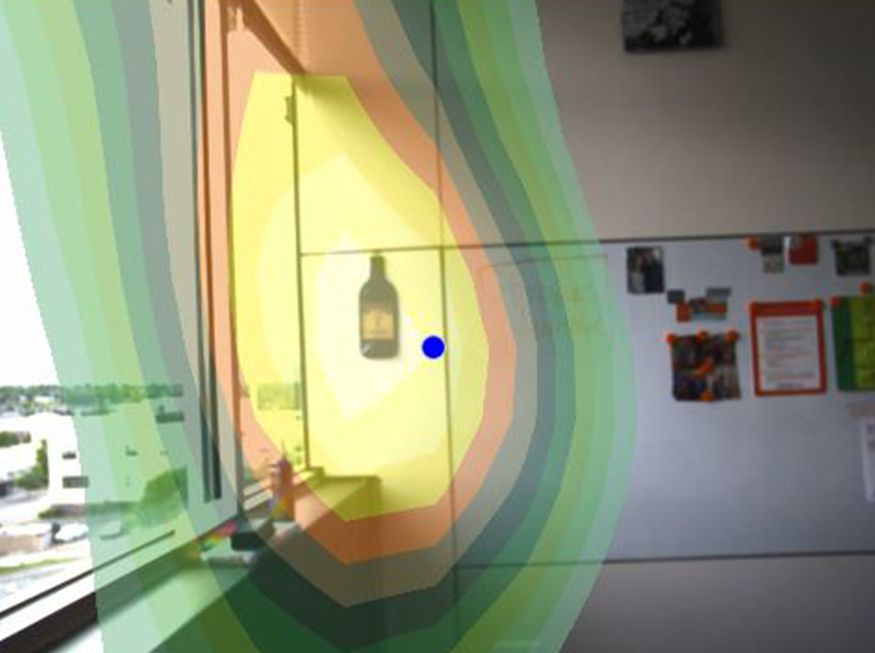
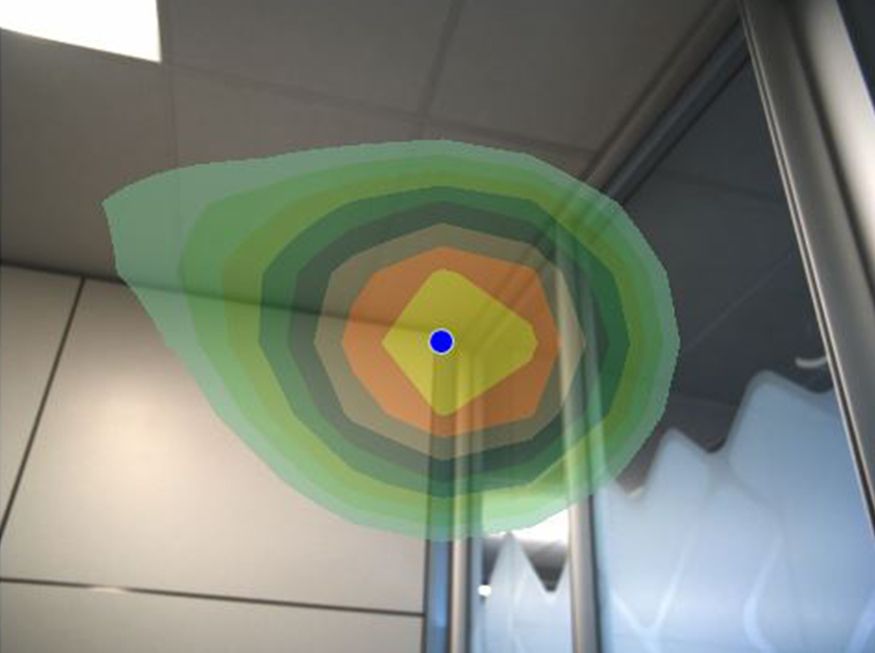
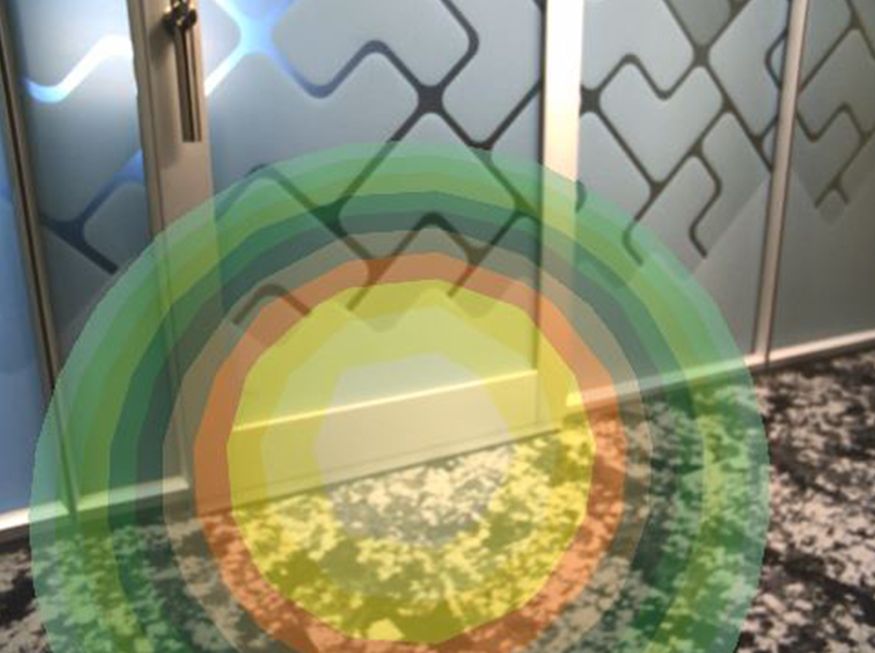
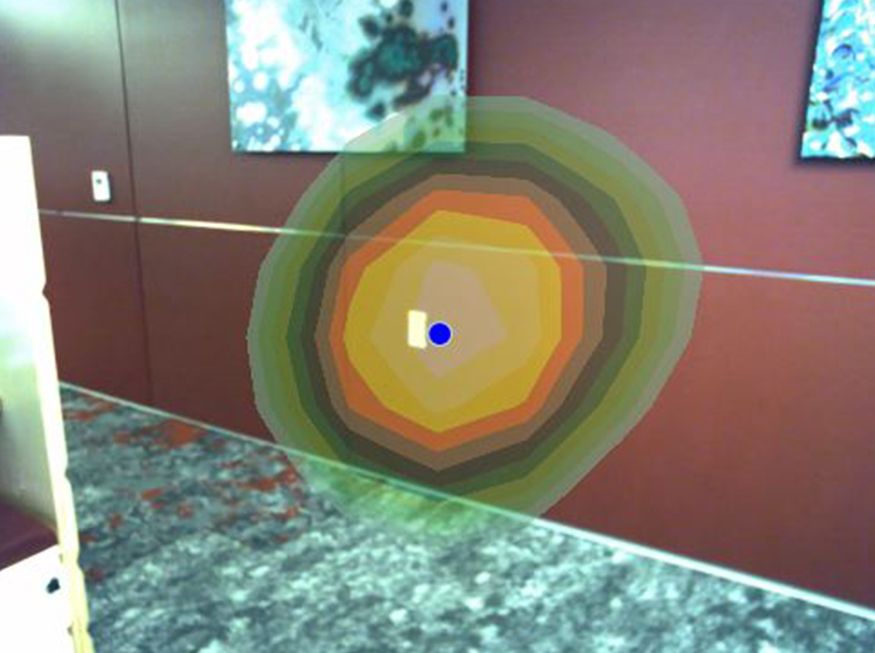
President, Wave Engineering
The modular walls of the office had seals intended to maintain sound isolation, but these, it turned out, were imperfect where the walls intersect – Wave Engineering will continue working with the wall manufacturer and installer to identify remedies for this issue. The wall system also included sliding doors that are difficult to seal well. The camera’s images showed strong sound transmission where the office door meets the floor and ceiling.
Finally, a sound “hot spot” was discovered at an electrical outlet and further investigation showed that a cover plate was missing. A satisfied client and a way forward to solving the issues was the end of a thorough investigation.
Jeff says, “These few examples show how the camera helped identify potential areas for improvement. The images are a very effective tool for communicating the issues to the client. This is a great example of how we work closely with our clients and provide practical solutions.”
RELATED ARTICLES


